Topic rainforest ecosystem food chain: Explore the vibrant web of life within the rainforest ecosystem food chain, where every creature plays a crucial role in maintaining Earth"s most biodiverse sanctuaries.
Table of Content
- How does energy flow through the rainforest ecosystem in a food chain?
- Understanding the Rainforest Ecosystem
- Key Components of the Rainforest Food Chain
- Primary Producers: The Foundation of the Food Chain
- Primary Consumers: Herbivores of the Rainforest
- Secondary Consumers: Carnivores and Omnivores
- Tertiary Consumers: Apex Predators
- YOUTUBE: Rainforest Food Chain and Food Webs
- Decomposers: Essential for Nutrient Cycling
- Threats to the Rainforest Food Chain
- Conservation Efforts and Sustainable Practices
- The Impact of Climate Change on Rainforest Ecosystems
- Human Influences on Rainforest Biodiversity
- Educational Initiatives for Rainforest Preservation
- Innovative Solutions for Rainforest Restoration
How does energy flow through the rainforest ecosystem in a food chain?
Energy flows through the rainforest ecosystem in a food chain as follows:
- Producers, such as plants and trees, are the first step in the food chain. They capture sunlight through photosynthesis and convert it into energy.
- Primary consumers, also known as herbivores, feed on producers. This can include animals like insects, rodents, and grazing mammals.
- Secondary consumers are the next level in the food chain. They are carnivores that feed on the herbivores. Examples can be snakes, lizards, and birds.
- Tertiary consumers are at the top of the rainforest food chain. They are apex predators, often larger animals that prey on other carnivores. Examples include jaguars, eagles, and crocodiles.
Energy transfers from one level to another in the rainforest food chain through the process of consumption. As each organism consumes another, the energy stored in the consumed organism is passed on to the consumer. This energy is utilized for various life processes, such as growth, reproduction, and movement.
It is important to note that not all energy is efficiently transferred from one level to the next. Some energy is lost as heat during metabolism or consumed organisms may not be completely digested. As a result, energy flow in the rainforest ecosystem follows the 10% rule, where only approximately 10% of the energy from one trophic level is passed on to the next.
READ MORE:
Understanding the Rainforest Ecosystem
The rainforest ecosystem is a complex, interwoven network of life, characterized by its vast biodiversity and intricate food chains. Home to millions of species, rainforests are crucial for the global climate and provide essential ecosystem services.
- Biodiversity: Rainforests are incredibly diverse, hosting more than half of the world"s plant and animal species in just 6% of the Earth"s surface area.
- Climate Regulation: They play a vital role in regulating the Earth"s climate by absorbing carbon dioxide, a greenhouse gas, and producing oxygen.
- Water Cycle: Rainforests contribute to the global water cycle by releasing water vapor into the atmosphere, which then returns as rain, supporting agriculture and human needs.
- Food Chain Complexity: The rainforest food chain begins with primary producers like plants and algae, moves up to herbivores, then to predators, and is completed by decomposers, recycling nutrients back into the soil.
Understanding the rainforest ecosystem is crucial for conservation efforts. These ecosystems are under threat from deforestation, climate change, and habitat destruction, which disrupts this delicate balance, leading to loss of biodiversity and ecosystem services.
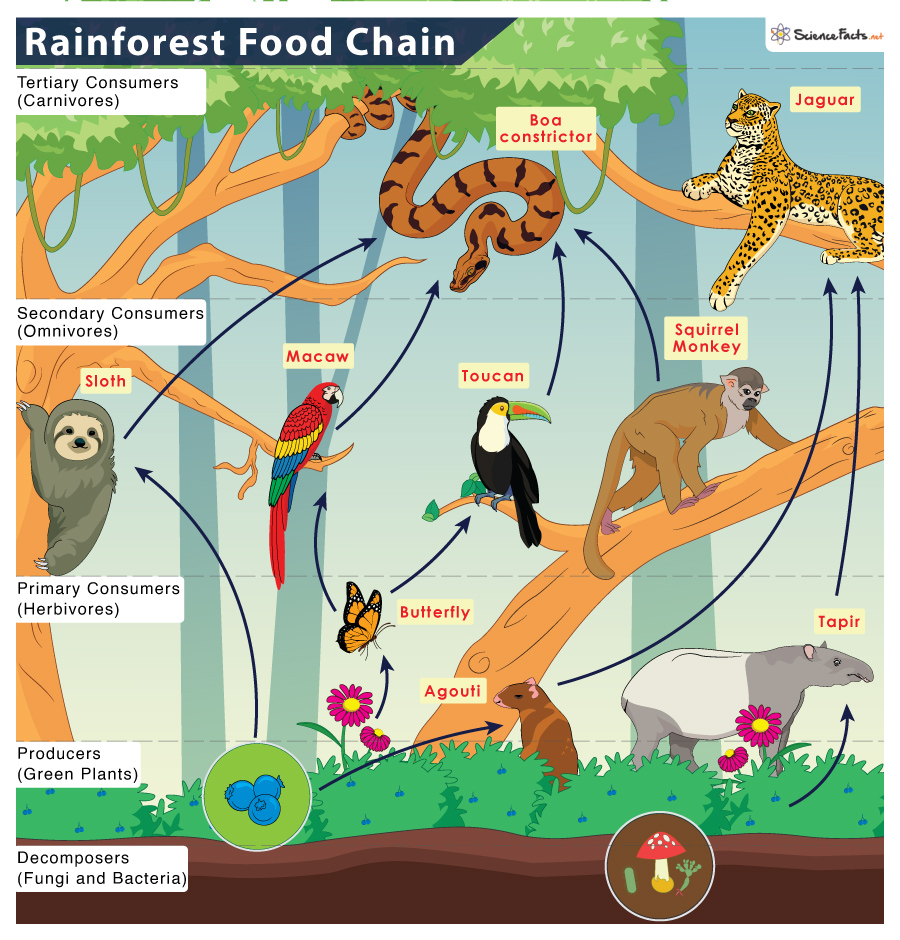
Key Components of the Rainforest Food Chain
The rainforest food chain is a complex system that supports a wide array of life forms. It is essential for maintaining the biodiversity and ecological balance of rainforest ecosystems. Here are the key components:
- Primary Producers: These are the base of the food chain, mainly composed of plants and trees that photosynthesize, converting sunlight into energy.
- Primary Consumers: Herbivores that feed on primary producers. They include insects, birds, and mammals that eat leaves, fruits, and other plant materials.
- Secondary Consumers: These are carnivores and omnivores that eat primary consumers. Examples include small predators like frogs and larger animals like snakes and some bird species.
- Tertiary Consumers: Apex predators that have no natural predators and are at the top of the food chain, such as jaguars and eagles.
- Decomposers: Organisms like fungi and bacteria that break down dead organic material, returning nutrients to the soil and supporting the growth of primary producers.
This hierarchical structure ensures energy flow from the sun to various forms of life, sustaining the rich biodiversity found in rainforests. The interdependence of these components highlights the importance of preserving every layer of the rainforest ecosystem.
Primary Producers: The Foundation of the Food Chain
Primary producers form the very foundation of the rainforest ecosystem food chain, playing a critical role in sustaining the diverse life forms within these habitats. Through the process of photosynthesis, they convert sunlight into chemical energy, providing the essential nutrients needed by other organisms to survive.
- Tropical Trees and Plants: The vast diversity of trees and plants in rainforests, such as the towering emergent, dense canopy trees, and the understorey plants, produce a significant amount of the world"s oxygen and serve as food for a variety of herbivores.
- Algae and Mosses: Found on the forest floor and on the surfaces of trees, these primary producers are crucial in humid environments, contributing to the nutrient cycle and supporting small insects and other fauna.
- Epiphytes: Plants like orchids and bromeliads that grow on the surfaces of trees, absorbing moisture and nutrients from the air and debris around them, providing habitats and food for insects and small animals.
These primary producers not only serve as a direct food source for various creatures but also modify the physical environment, creating microhabitats essential for the survival of numerous species. The abundance and variety of plant life in rainforests are vital for the complex web of life that constitutes these ecosystems.
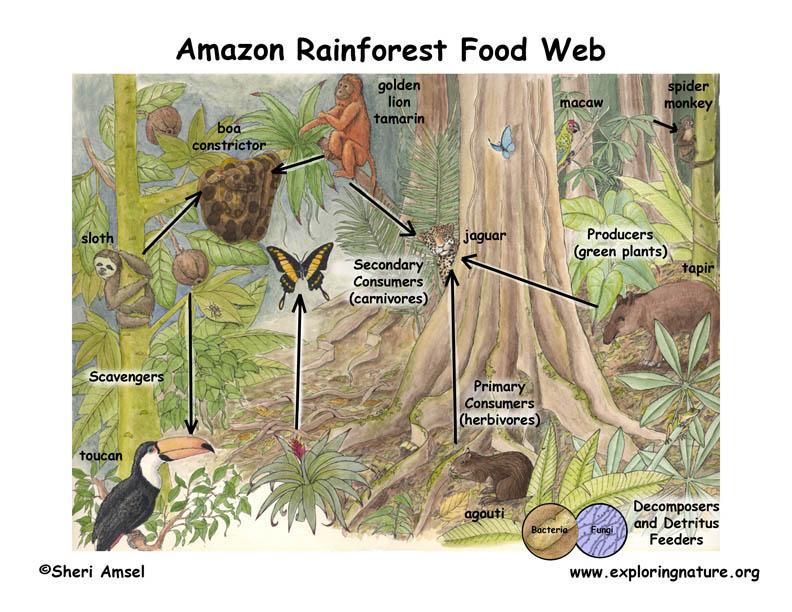
Primary Consumers: Herbivores of the Rainforest
In the dense, vibrant ecosystems of rainforests, primary consumers play a vital role in maintaining the balance of the food chain. These herbivores feed on the abundant vegetation, transferring the energy stored in plants to the rest of the ecosystem.
- Insects: A diverse group including caterpillars, beetles, and grasshoppers, insects are crucial in processing plant matter and serving as a primary food source for higher-level consumers.
- Arboreal Mammals: Tree-dwelling species such as sloths and certain monkeys specialize in consuming leaves, fruits, and flowers, contributing to seed dispersal and forest regeneration.
- Terrestrial Herbivores: Larger ground-based animals like tapirs and forest elephants consume a significant amount of vegetation, helping to shape the forest structure and create paths for smaller creatures.
- Birds: Various bird species, including parrots and toucans, feed on fruits, nuts, and seeds, playing key roles in pollination and seed dispersal across vast forest areas.
These primary consumers are essential for their role in the food web, acting as a bridge between the sun"s energy, captured by plants, and the predators that feed on them. The diversity of herbivores reflects the complexity and richness of the rainforest ecosystem, highlighting the importance of each species in sustaining ecological balance.
Secondary Consumers: Carnivores and Omnivores
Secondary consumers are a critical link within the rainforest ecosystem food chain, comprising both carnivores and omnivores. These animals feed on primary consumers, transferring and cycling energy throughout the ecosystem.
- Small Predators: Creatures such as spiders, snakes, and certain bird species, which prey on insects and other small animals, showcasing the diversity of hunting strategies and dietary preferences.
- Medium-sized Mammals: Species like the ocelot or the tree boa, which feed on a variety of smaller animals, demonstrating the complexity of rainforest food webs.
- Large Predators: Apex predators such as jaguars and crocodiles, at the top of the food chain, regulate the population of primary consumers, maintaining ecological balance.
- Omnivores: Animals like certain monkey species and wild pigs, which have a diet consisting of both plant and animal matter, showing the adaptability and flexibility of rainforest species in their quest for food.
These secondary consumers not only help control the populations of primary consumers, preventing overgrazing and promoting plant diversity, but they also serve as prey for larger predators, illustrating the interconnectedness of all life within the rainforest.
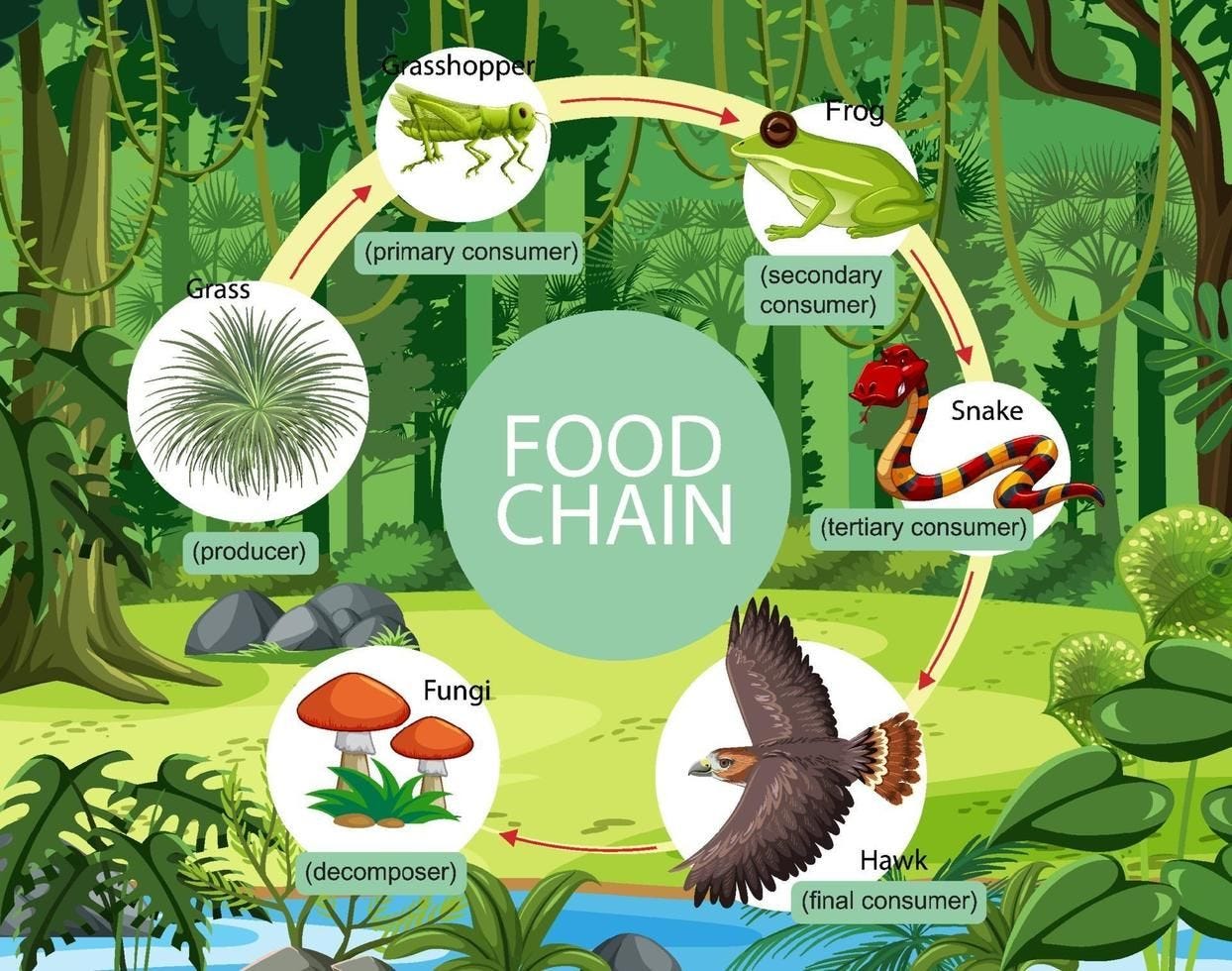
Tertiary Consumers: Apex Predators
Tertiary consumers stand at the pinnacle of the rainforest food chain. These apex predators have no natural predators of their own and play a crucial role in maintaining the health and balance of the ecosystem by controlling the population of secondary consumers.
- Jaguars: The largest predators in the rainforest ecosystem, jaguars are solitary hunters that prey on a variety of species, from fish to mammals.
- Eagles: Birds of prey like the harpy eagle possess keen eyesight and powerful talons, specializing in hunting medium-sized mammals and birds.
- Anacondas: One of the largest snakes in the world, anacondas rely on their immense strength to constrict and overpower large aquatic and terrestrial prey.
- Crocodiles: These large reptiles are formidable predators, lying in wait for unsuspecting prey near water bodies.
Apex predators are essential for preventing overpopulation of certain species and ensuring diversity among primary and secondary consumers. By controlling the population of other animals, they help to sustain the dynamic equilibrium of the rainforest ecosystem.
Rainforest Food Chain and Food Webs
Discover the intricate web of life in the mesmerizing Rainforest Food Chain. Witness how every plant, animal, and insect plays a crucial role in sustaining this vibrant ecosystem. Prepare to be amazed by nature\'s wonders!
Rainforest Food Chain | Rainforest Ecosystem
Step into the lush and enchanting world of the Rainforest Ecosystem. Immerse yourself in the breathtaking beauty of towering trees, diverse plant species, and an abundance of fascinating wildlife. Explore the delicate balance of this incredible habitat and unlock the secrets it holds.
Decomposers: Essential for Nutrient Cycling
Decomposers play a vital role in the rainforest ecosystem, breaking down dead organic matter and recycling nutrients back into the soil, supporting new plant growth and sustaining the food chain. Without these organisms, ecosystems would not function properly.
- Fungi: Fungi break down dead wood and leaf litter, converting them into nutrient-rich soil. They are crucial for the health of the forest floor.
- Bacteria: Bacteria decompose organic material at a microscopic level, releasing nutrients like nitrogen and phosphorus essential for plant growth.
- Detritivores: Creatures such as earthworms and certain insects consume decomposing matter, further breaking it down and enriching the soil.
By decomposing dead plant and animal matter, these organisms ensure the continuation of the nutrient cycle, making it possible for new life to flourish in the rainforest. Their work supports the entire ecosystem, making them as crucial as any other living component within the rainforest.

Threats to the Rainforest Food Chain
The rainforest food chain faces numerous threats that jeopardize its intricate balance and the survival of countless species. These threats not only disrupt the ecological equilibrium but also have far-reaching consequences for global biodiversity and climate regulation.
- Deforestation: The clearing of rainforest land for agriculture, logging, and urban expansion leads to habitat loss, threatening the survival of species at all levels of the food chain.
- Climate Change: Altered temperature and precipitation patterns can shift the distribution of species and disrupt the timing of food availability, affecting the entire ecosystem.
- Pollution: Chemical pollutants from industrial and agricultural sources can accumulate in the food chain, harming wildlife and disrupting reproductive patterns.
- Invasive Species: Non-native plants and animals introduced by human activity can outcompete indigenous species for resources, altering the food web dynamics.
- Overexploitation: The unsustainable harvesting of rainforest resources, including hunting and fishing, can deplete populations of key species, impacting the food chain.
Addressing these threats requires global cooperation and sustainable management practices to ensure the preservation of rainforest ecosystems for future generations. By understanding and mitigating these challenges, we can work towards a healthier planet.
Conservation Efforts and Sustainable Practices
Protecting the rainforest ecosystem and its food chain is crucial for the health of our planet. Conservation efforts and sustainable practices are being implemented worldwide to preserve these vital habitats and ensure their biodiversity for future generations.
- Protected Areas: Establishing national parks and reserves to safeguard critical habitats and prevent deforestation and exploitation.
- Reforestation Projects: Planting trees to restore degraded areas, which helps to rebuild the food chain and sequester carbon dioxide.
- Community Involvement: Engaging local communities in conservation efforts, providing them with sustainable livelihoods that do not harm the environment.
- Sustainable Agriculture: Promoting farming practices that reduce impact on the rainforest, such as shade-grown crops and agroforestry, which integrate tree planting with agriculture.
- Wildlife Corridors: Creating pathways that connect fragmented habitats, allowing animals to move freely and maintain genetic diversity.
- Education and Awareness: Raising global awareness about the importance of rainforests and the need for conservation through education programs and media.
- Policy and Legislation: Implementing laws and regulations that protect rainforests, restrict illegal logging, and regulate land use.
These efforts are essential to combat the threats facing rainforests and their food chains, such as deforestation, climate change, and biodiversity loss. By adopting sustainable practices and supporting conservation initiatives, we can help ensure the survival of these ecosystems for generations to come.

The Impact of Climate Change on Rainforest Ecosystems
Climate change poses significant threats to rainforest ecosystems, impacting their structure, function, and the diversity of life they support. The effects of global warming and changing weather patterns are already being observed and are expected to intensify.
- Altered Rainfall Patterns: Changes in precipitation affect the delicate balance of rainforest ecosystems, leading to droughts in some areas and floods in others, which can devastate plant and animal species.
- Increased Temperatures: Rising temperatures can exceed the tolerance levels of many rainforest species, leading to shifts in distribution and potentially causing extinctions.
- Carbon Sequestration: Rainforests act as significant carbon sinks, but climate change could reduce their capacity to absorb carbon dioxide, exacerbating global warming.
- Habitat Fragmentation: Climate change, along with human activities, leads to habitat fragmentation, isolating populations and reducing biodiversity.
- Invasive Species: Warmer temperatures may allow invasive species to thrive, outcompeting native flora and fauna and altering food web dynamics.
- Disease Spread: Climate change can also influence the spread of diseases in rainforest ecosystems, affecting both wildlife and human populations.
The impact of climate change on rainforest ecosystems underscores the urgent need for global action to reduce greenhouse gas emissions and protect these vital habitats. Through concerted conservation efforts and sustainable practices, we can mitigate some of these impacts and preserve the rainforest for future generations.
Human Influences on Rainforest Biodiversity
Human activities have profound impacts on rainforest biodiversity, often leading to irreversible changes in these complex ecosystems. While some influences can be managed or mitigated, others pose significant challenges to the sustainability of rainforests worldwide.
- Deforestation: The conversion of forest land to agriculture, logging, and infrastructure development is the primary cause of habitat loss, threatening the survival of countless species.
- Pollution: Air and water pollution from mining, industrial activities, and the use of pesticides and fertilizers degrade rainforest environments, affecting both plant and animal health.
- Climate Change: Driven by human activity, climate change impacts rainforests by altering weather patterns and increasing the frequency of fires and droughts, which can lead to species migration and extinction.
- Overexploitation: The unsustainable extraction of resources, including timber, minerals, and wildlife, for commercial purposes disrupts the ecological balance and reduces biodiversity.
- Introduction of Invasive Species: Human activities often introduce non-native species to rainforest ecosystems, which can outcompete, prey on, or bring diseases to indigenous species, leading to biodiversity loss.
Addressing these human influences requires a concerted effort to implement sustainable practices, enforce environmental protections, and raise awareness about the importance of conserving rainforest biodiversity for the health of our planet.

Educational Initiatives for Rainforest Preservation
Educational initiatives play a crucial role in promoting the preservation of rainforest ecosystems. By raising awareness and understanding of these complex environments, we can foster a deeper appreciation for their value and the urgent need for their protection.
- Environmental Education Programs: These programs, aimed at students of all ages, focus on the importance of rainforests, their biodiversity, and the effects of deforestation and climate change.
- Community Outreach: Engaging local communities living near rainforests in conservation efforts, providing them with the knowledge and tools to protect their natural heritage.
- Online Courses and Workshops: Utilizing digital platforms to reach a global audience, these courses offer in-depth knowledge about rainforest ecosystems, conservation strategies, and sustainable practices.
- Partnerships with Schools: Collaborating with educational institutions to integrate rainforest conservation into the curriculum, encouraging hands-on learning experiences such as tree planting and wildlife monitoring.
- Public Awareness Campaigns: Using media and social networks to highlight the importance of rainforests and the threats they face, inspiring collective action to address these challenges.
Through these educational initiatives, individuals are empowered to contribute to rainforest preservation, ensuring these vital ecosystems continue to thrive for generations to come.
READ MORE:
Innovative Solutions for Rainforest Restoration
Rainforest ecosystems, vital for biodiversity and climate regulation, face significant threats from deforestation, climate change, and other human activities. Innovative solutions for restoration focus on rebuilding these ecosystems, enhancing biodiversity, and supporting local communities. Here are some cutting-edge approaches:
- Reforestation with Native Species: Planting native trees and plants to restore the natural habitat. This method not only helps in bringing back the lost flora and fauna but also supports the local climate and soil health.
- Agroforestry: Combining agriculture with forestry techniques to create more sustainable land-use systems. Agroforestry practices can improve soil quality, increase biodiversity, and provide economic benefits to local communities.
- Seed Bombing or Aerial Reforestation: Using aircraft to distribute seeds over large areas that are difficult to reach. This technique can quickly cover vast areas with native tree species, accelerating the process of forest regeneration.
- Biochar: Incorporating biochar, a form of charcoal, into the soil to improve water retention and carbon sequestration. Biochar can enhance soil fertility and increase agricultural productivity, making land more resilient to erosion and degradation.
- Ecological Corridors: Establishing strips of natural habitat that connect isolated forest patches. These corridors facilitate wildlife movement and genetic exchange, crucial for maintaining biodiversity.
- Community-based Forest Management: Involving local communities in the conservation and restoration efforts. Empowering communities through education and resources to manage forests sustainably ensures long-term preservation and benefits.
- Advanced Monitoring Technologies: Utilizing satellite imagery, drones, and AI to monitor deforestation, forest health, and the success of restoration projects. These technologies enable real-time data collection and analysis, helping to adapt strategies as needed.
These innovative solutions, when implemented effectively, offer hope for the restoration of rainforest ecosystems. By combining traditional knowledge with new technologies and practices, we can work towards a sustainable future for our planet"s lungs.
Exploring the rainforest ecosystem food chain reveals a complex, interconnected world vital for our planet. Join us in uncovering its wonders and contributing to its preservation for future generations to marvel and thrive in.





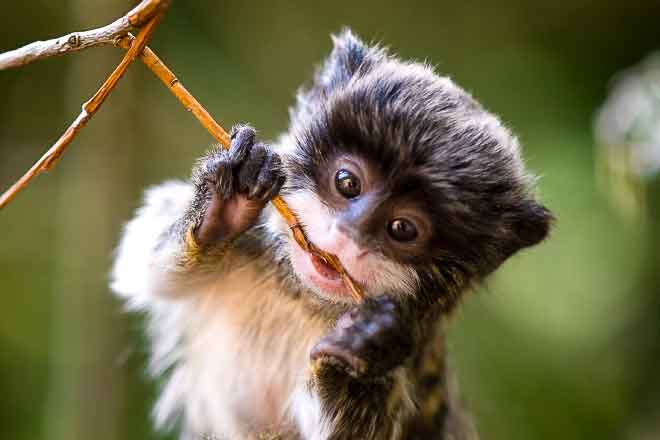

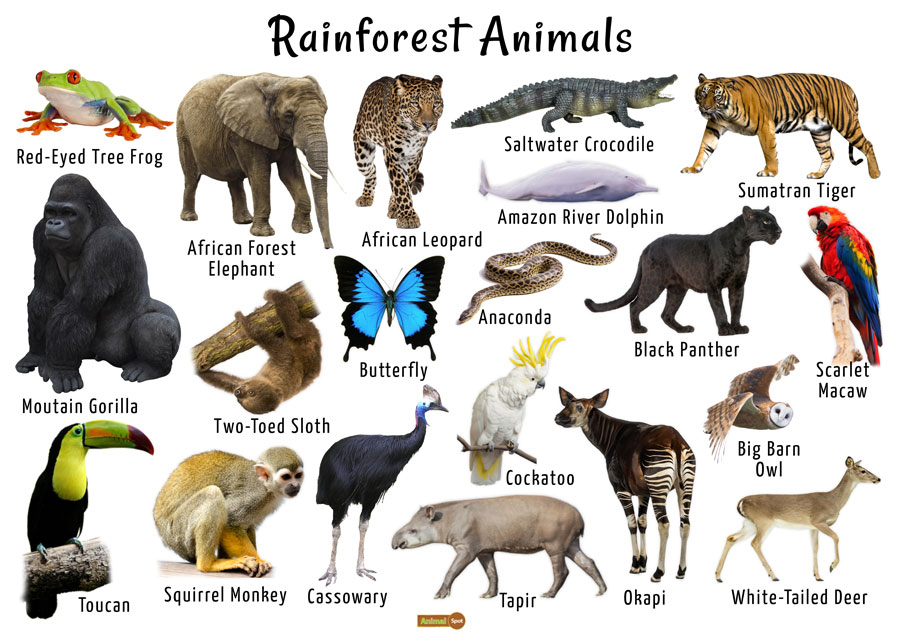
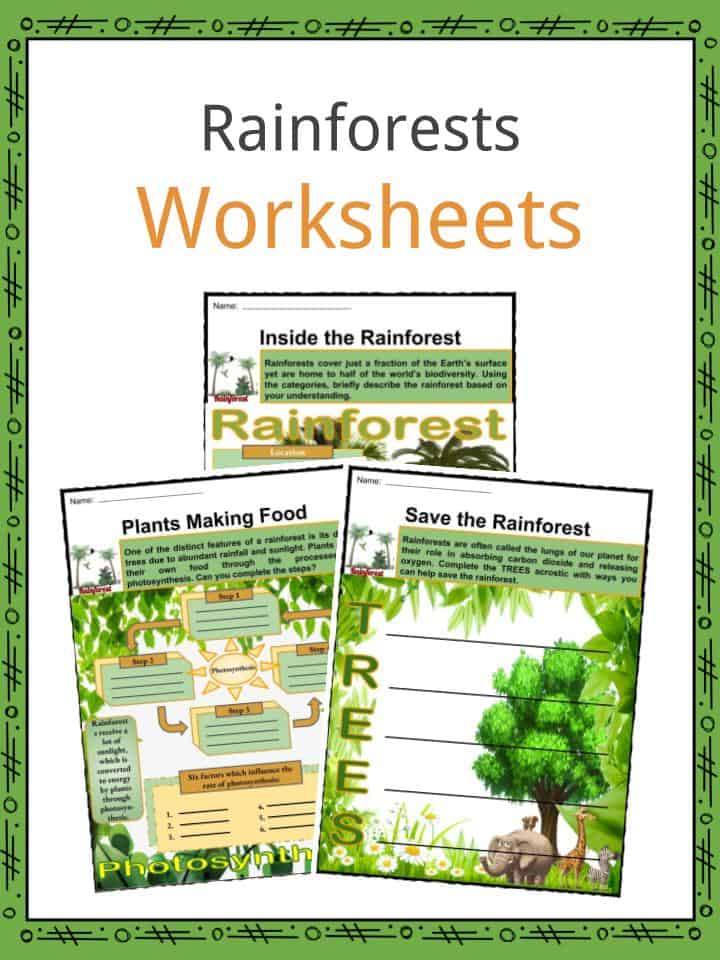


:max_bytes(150000):strip_icc()/497408077-56af61ff3df78cf772c3c309.jpg)


